Mekhman N Mamedov, National Research Center for Therapy and Preventive Medicine, Russian Federation
In the first decades of the 21st century, chronic noncommunicable diseases (CNCDs) remain the leading cause of disability and death among adults in the developed world. Their total share in mortality is about 77%. Malignant oncological diseases, along with cardiovascular diseases [....] » Read More

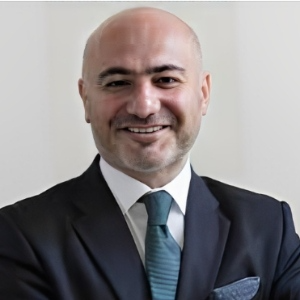


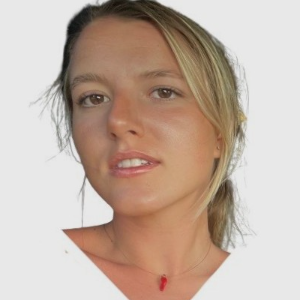



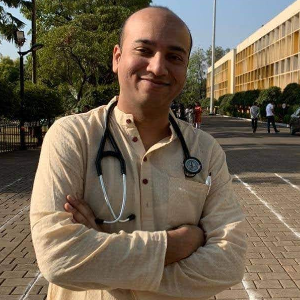



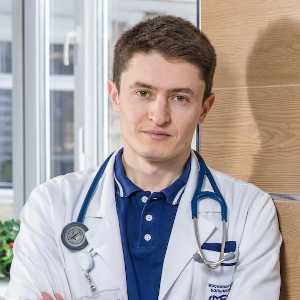







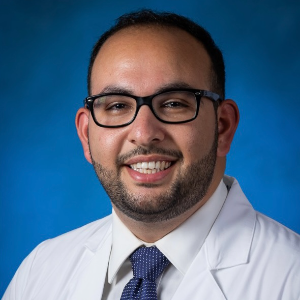












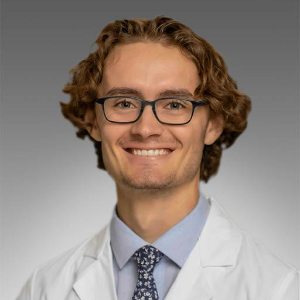


Title : Should we continue to prescribe aspirin for patients with coronary artery disease?
Yochai Birnbaum, Baylor College of Medicine, United States
For years aspirin was considered an essential part of the treatment of patients with or at risk of coronary artery disease. However, more recent studies have shown that aspirin, even at low dose, does not improve outcomes when administered for primary prevention and is associated [....] » Read More
Title : Conditional probability utilization for the analysis of noninvasive cardiac testing
Timothy F Christian, Albert Einstein College of Medicine, United States
The use of multiple noninvasive tests in a patient for a specific question in cardiology is becoming more common. While it is expected that each new piece of test information will align, the reality is that each test carries strengths and weaknesses that generate a profile of acc [....] » Read More
Title : Normalizing effects of bacterial serum opacity factor on plasma lipids, tissues, and atherosclerosis
Corina Rosales, Houston Methodist Research Institute, United States
Although plasma HDL-C levels negatively correlate with atherosclerotic cardiovascular disease (ACVD), attempts to reduce ACVD risk by raising plasma HDL have disappointed. Thus, hypotheses about salutary HDL effects have shifted from higher-is-better to function-is-more-important [....] » Read More
Title : Screening for causes of secondary hypertension on hospital admission.
Syeda Anum Zahra, Imperial College NHS Trust, United Kingdom
Introduction: Although majority of patients have essential hypertension, secondary hypertension can also cause significant cardiovascular events. Secondary hypertension is defined as hypertension due to an identifiable cause and has a prevalence of 5-10%. European Society of Card [....] » Read More
Title : Heart failure: assessments and treatment prior to and during geriatric care
Marianne Reimers Wessberg, Karolinska Institute, Sweden
Background: Heart failure (HF) is globally the most common cause for admission to hospital for patients 65 years and older in high income countries. Research on HF has however often focused on younger patients. The aim of these studies was to analyze extent of investigation and t [....] » Read More
Title : The value of mixed and group-based exercise in stroke rehabilitation and secondary prevention: Results from a randomized cross-over trial in low-income settings
Nindorera Felix, UCLouvain, Belgium
Background: Post-stroke mobility deficits and physical inactivity are highly prevalent. Although physical activity has been shown to be effective for poststroke people, access to exercise training protocols is limited in community especially low-income settings. In addition, the [....] » Read More
Title : “Umbrella like” myocardial “no touch” surgical closure of the postinfarction posterior ventricular septal defect
Sasa Kacar, University Clinical Center of Serbia, Serbia
Post-infarction ventricular septal defect rupture (PIVSR) is rare but highly lethal complication of acute myocardial infarction. Even with well-established surgical treatment (David’s or Daggett’s technique), 30-days mortality is still high, more than 40%. The mo [....] » Read More
Title : The faces of post-streptococcal cardiac involvement in Paediatrics: A case series
Wilson Saputra Wijaya, Trisakti University, Indonesia
Group A Streptococcus (GAS) is a global burden, including in Indonesia, with long-term morbidity and mortality complications. The different response to nephrogenic and rheumatogenic strain makes concurrent post-streptococcal glomerulonephritis with acute rheumatic fever a rarity. [....] » Read More
Title : Assessment of strain imaging in the prediction of early Cancer Therapy-Related Cardiac Dysfunction (CTRCD) troponin and its correlation with serum biomaker (TROPONIN-I)
Dhulipalla Dharma Teja, NRI Medical College, India
Introduction: Cancer therapy-related cardiac dysfunction (CTRCD) is one of the side effects experienced by nearly one-tenth of cancer survivors. LVEF and GLS have been proposed as a marker to predict CTRCD. Recent studies also suggest assessment of cardiac biomarkers including tr [....] » Read More
Title : An unusual case of post-thrombolysis emergency Coronary Artery Bypass Graft surgery (CABG) with postoperative complication of hemothorax in a young patient
Anuja Waidande, Bharti Vidyapeeth Medical College and Hospital, India
We present a case of a 43-year-old man, a known case of hypertension, who was diagnosed with acute myocardial infarction for which he was given streptokinase (Fibrinolytic drug).He presented to the hospital with exertional dyspnoea and chest pain. Angiogram showed triple-vessel d [....] » Read More
Title : Assessment of risk factors, pattern and severity of CAD in semi-urban Indian women
Shivling Sanjay Swami, Bharti Vidyapeeth Medical College and Hospital, India
Introduction: It is an alarming observation that one third of all women in their fourth decade will develop coronary artery disease(1). Moreover, young women who develop coronary artery disease have a higher morbidity and mortality as compared to men of same age. (1,2) Traditiona [....] » Read More
Title : A conceptual paper on stakeholder collaboration aimed at addressing the psycho-social needs of women living with hypertension: Community development approach
Linda Shirindi, University of South Africa, South Africa
Stakeholder collaboration is significant to the contribution and improvement of psycho-social functioning and resilience of women living with hypertension. The purpose of the study was to explore and describe perceptions of stakeholders in addressing psycho-social needs of women [....] » Read More
Title : Surgical treatment of myxomas of the heart
Volodymyr Popov, Amosov National Institute of Cardiovascular Surgery, Ukraine
Purpose: To determine the possibilities of surgical treatment of myxomas of the heart (MH). Material and methods: In Institute for period from 1.01.1969 to 1.01.2020 957 patients (pts) with the verified primary tumors of heart were operated . The MH [....] » Read More
Title : Arch plasty of left atrium for moderate dilatation of left atrium during mv`s correction: Is it necessary?
Valery Boukarim, Amosov National Institute of Cardiovascular Surgery, Ukraine
Objective: To determined possibillities of left atrium (LA)`s reduction by original method of arch plasty of LA (APLA) during mitral valve replacement (MVR) for isolated mitral valve disease (MVD). Methods: During 2005 – 2021 yy. 454 adult patients [....] » Read More
Title : Mechanical valve for isolated mitral stenoses complicated massive thromboses of left atrium: Is it necessary?
Evgen Novikov, Amosov National Institute of Cardiovascular Surgery, Ukraine
Objective: To analyzed main problems in surgery of mitral valve diseases (MVD) complicated by left atrium`s massive thromboses (LAMT) (thromboses more than 1/3 of left atrium`s volume). Materials and Methods: 336 adult patients (pts) with MVD complicated LA [....] » Read More
Title : Plasty of left atrium for atriomegaly during mitral valve correction
Volodymyr Popov, Amosov National Institute of Cardiovascular Surgery, Ukraine
Objective: To determined possibillities of left atrium (LA)`s reduction by original method of triangular plasty of LA (TPLA) during valve`correction replacement. Methods: During 2005 – 2021 yy. 725 adult patients (pts) with MVD and LA`s at [....] » Read More
Title : Myocardial protection for isolated mitral valve replacement: Is retrograde applying of cardioplegia is better ?
Gurtovenko Alexey, Amosov National Institute of Cardiovascular Surgery, Ukraine
Objective: To present analysis of retrograde crystalloid cardioplegia during isolated mitral valve replacement (MVR) . Materials and Methods: During 2009-2020 y 529 patients (pts) with isolated pathology of mitral valve disease (MVD) were operated by MVR in departmen [....] » Read More
Title : Surgical outcome of post-infarction left ventricular free wall rupture
Chan Young Na, Dontan Hospital, Korea, Republic of
Background and objectives: Left ventricular free rupture is rare and one of the fatal complications after acute myocardial infarction. Early recognition and aggressive treatment is recommended. Methods: Between August 1999 and February 2023, eleven patients with ages [....] » Read More
Title : Rheumatic valve disease in pregnant women-An interesting case managed in two continents
Qazi Naeem Ur Rehman, Wirral University Hospital, United Kingdom
Rheumatic fever is the most common cause of mitral stenosis and carries a high degree of morbidity in pregnant females adverse foetal outcomes are associated with mitral stenosis in pregnancy. Pathophysiology, symptoms and diagnosis of rheumatic valve stenosis during pregnan [....] » Read More
Title : Plasmapheresis as a potential novel therapy to prevent cardiac fibrosis
Javier Lozano, University of the Philippines, Philippines
When a myocardial infarction (MI) takes place, a process of cardiac remodelling follows. This is necessary to resolve the reduced or blocked flow of blood into the stressed or dying cardiac tissue. This includes the formation of scar tissue and deposition of extracellular matrix [....] » Read More
Title : Metastudy of potential key genes associated with cardiac fibrosis after acute myocardial infarction from published microarray data in a mouse model
Al James A Manua, University of the Philippines, Philippines
In this study, we investigated the shared key genes, pathway networks, and transcription factors (TFs) associated with Cardiac Fibrosis following Acute Myocardial Infarction (AMI) in mouse models. Gene expression profiles of AMI and the sham-control group were obtained from the [....] » Read More
Title : Simplified Method for the simultaneous isolation of viable cardiomyocytes and nonmyocytesfrom the adult mouse heart
Mariel Lizbeth Joy Agsaoay, University of the Philippines, Philippines
Cardiovascular diseases (CVDs) have remained the leading cause of global mortality. Of these, one of the main events leading to death is myocardial infarction (MI), followed by cardiac fibrosis. To better understand the disease and its development, various techniques [....] » Read More